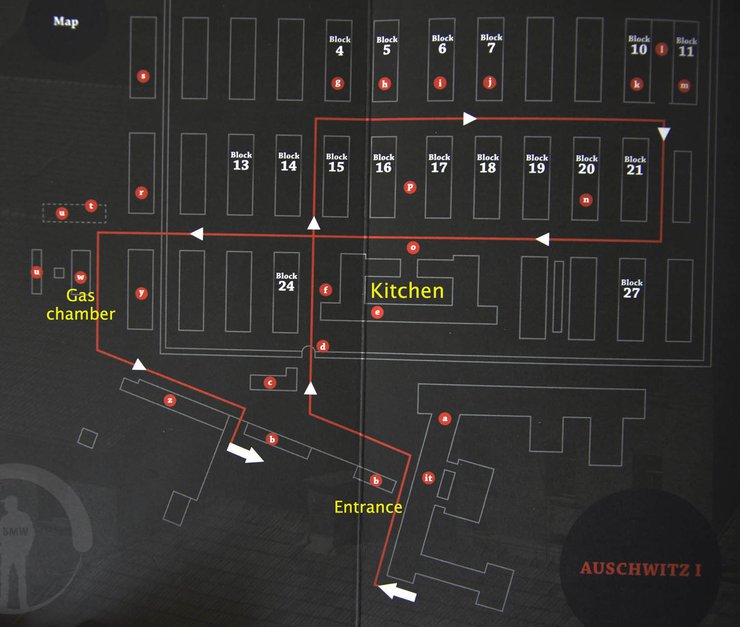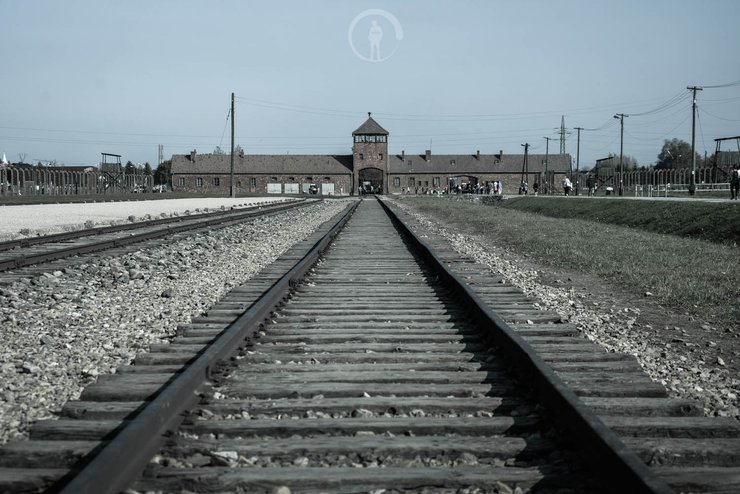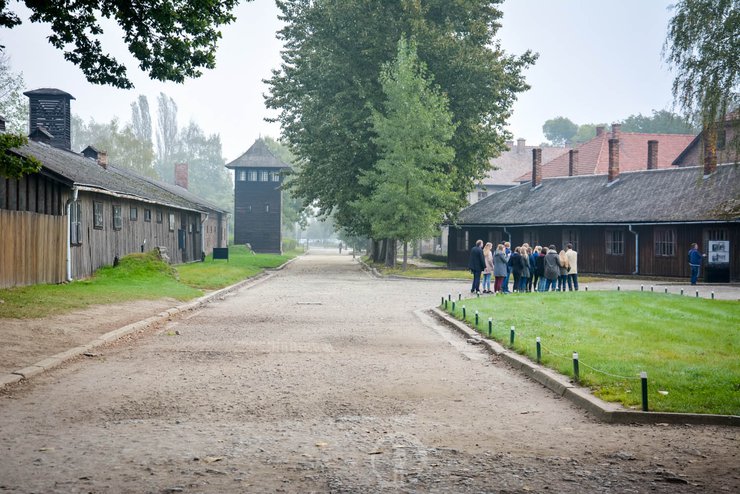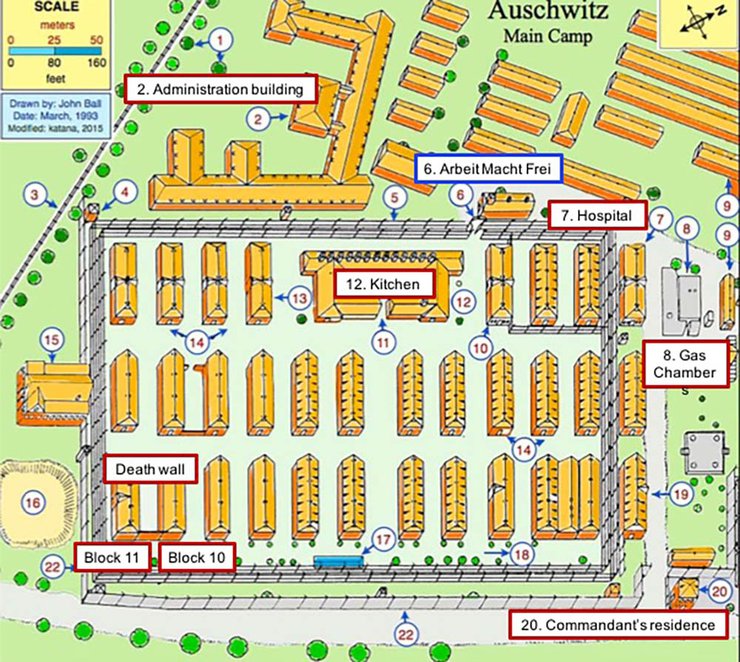Destination: Poland
"Those who forget the past are doomed to repeat it."
History is meant to be learned from, so that future generations will not repeat its mistakes.
George Santayana

Auschwitz: Reality or Illusion?

However, a significant number of historians and scholars remain skeptical about the veracity of the confessions and evidence. They question whether the number of corpses and ashes could have been disposed of, whether the gas chambers could have prevented leaks that would have endangered others, and whether the number of Jews killed, as "confessed" by the camp commander, was exaggerated.
However, if it is true... what happened is too cruel to describe.
A Broad View of Auschwitz
The Nazi concentration camps were not limited to a single location. They were scattered throughout Europe, including Poland and Germany. Each camp had its own grim and harrowing history.

The Horrors of Auschwitz: A Place of Death and Despair
Auschwitz, a name synonymous with unimaginable suffering and death, stands as a stark reminder of the atrocities committed during the Holocaust. Over 1.1 million people perished within its walls, with an estimated 90% being Jewish. These victims met their tragic ends through brutal means, including shootings, gassing, disease, and starvation. The camp was commanded by the ruthless Rudolf Höss, who oversaw the systematic extermination of countless innocent lives.
As the number of prisoners swelled, Auschwitz expanded in 1940, branching out into several sub-camps. This expansion was a direct result of the overwhelming influx of innocent individuals targeted for persecution. The main camp, Auschwitz I, established in April 1940, was joined by the much larger Birkenau (Auschwitz II) in October 1941 and Monowitz (Auschwitz III) in October 1942. Numerous smaller sub-camps also dotted the landscape, further contributing to the camp's capacity for cruelty.

Additional resources: https://breathemyworld.com/2016/10/06/lessons-from-the-past-auschwitz-ค่ายกักกันนรก/ and http://pantip.com/topic/35669666
Start your journey

Labor liberates.
"Arbeit Macht Frei" was a slogan used by the Nazis at concentration camps. It translates to "Work Sets You Free" in English. This slogan was meant to give hope to the Jews and other ethnicities who were brought to the camps. However, this hope was ultimately false, as the Nazis had no intention of releasing the prisoners.

Interior of Auschwitz I camp












Tales from the Past
At Auschwitz I, the site is relatively intact, including the gas chambers, as the area largely escaped wartime bombing and Nazi destruction of evidence. The barracks (or blocks) were originally maintained and organized to display the various events that took place. Each block tells a different story.
1. The exhibition blocks showcasing individual countries are not included in the tour program. These blocks, including Block 13, 15, 16, 17, 18, 20, and 21, require independent exploration.
2. The main exhibition blocks of the camp are located in blocks 4, 5, 6, 10, and 11.



Block 10 (Experiment) is a block used for various cruel experiments. This block is not open to the public, but there is a large courtyard between Block 10 and 11 that is open to visitors. This courtyard was used as an execution ground for prisoners (death wall or black wall).
**Block 11 (death block)** was once a place of even greater torment than the other blocks. It contained both standing cells and starvation cells, where prisoners were held until they died.

Block 3 (Study Tour Block)



Selection


The camp and the courtyard in the picture below are used to "select" the people who arrive.




Despite the exhaustion from being transported from their homes, many still held onto a glimmer of hope for a better life, having been deceived with promises of a better place. However, they were unaware that their future held little promise.

Stripped of their clothes and hair, those deemed unfit were led to a "shower room," a staged gas chamber disguised as a place of cleansing. The remaining prisoners were ushered into the camp, where they were greeted by the deceptive sounds of an orchestra playing near the kitchen, located by the entrance sign.


They were then taken to be shaved, bathed, and clothed, and "registered." Initially, this involved photographing and recording their details. However, as the number of people increased, photographing became too time-consuming, so they began tattooing numbers on their arms instead. From then on, they would no longer have names like other humans.




Personal belongings that were confiscated, suitcases with carefully written names and addresses in the hope of being returned, glasses, and prosthetics of the "useless" were stored away. As for the owners of these prosthetics, their fate needs no explanation.










A life that is like a (bad) dream
Misled by promises of a better life, these individuals brought a considerable amount of belongings with them. Their suitcases were meticulously labeled with their names. However, upon arrival, all their possessions were confiscated and stored in a warehouse known as "Kanada" (a name chosen due to Canada's reputation as a wealthy nation).



Please Translate:
Is this the life I dreamed of…

Uniform


Life here...


>> Poor sanitation led to the rampant spread of diseases such as typhoid fever, tuberculosis, dysentery, and meningitis, resulting in widespread malnutrition and death. Despite the presence of hospitals, they were essentially no different from slaughterhouses, as they only provided adequate care to Nazi soldiers.











The interior of the pen (sleeping quarters) is very stuffy, with only a small ventilation opening on the roof, as shown in the picture below. There is a fireplace, but it does not provide much warmth, especially during the winter months when temperatures can sometimes drop below zero.







Imagine the scene depicted in the drawing above, where prisoners are forced to use the toilet in a cramped and unsanitary environment. Each person is only allowed one minute to relieve themselves before they must make way for the next prisoner. The guide informs us that the most fortunate individuals in this situation are those who work in the latrine. Although they are responsible for removing the waste, they have the luxury of using the toilet at their leisure and without the pressure of time. Additionally, they are more likely to have the opportunity to maintain their personal hygiene, which helps to prevent the spread of disease from the waste.

Hospital of the People


The above picture depicts some of the most notorious doctors in history, whose names will forever be etched in the annals of cruelty. (This is only a partial list, as there are many others.) From left to right, they are:
1. "Angel of Death" or Dr. Josef Mengele
Fate: After the war, he fled to South America and is believed to have died from a stroke while swimming in 1979.

2. Dr. Herta Oberheuser
This individual conducted experiments on the treatment of war wounds by "creating" the desired wounds. This involved inflicting incisions on the bodies of prisoners of war, inserting debris such as dirt, glass, and metal fragments to simulate wounds, and causing severe pain. The researcher then treated the wounds with various medicinal formulas.
Fate: After the war, she was tried as a war criminal and sentenced to 20 years in prison. However, her sentence was reduced, and she was released in 1952. Following her release, she secretly practiced medicine but was caught and had her medical license revoked. She died in 1978.
3. Dr. Johann Paul Kremer
The research investigated the effects of starvation on the body. Phenol was directly injected into the heart, and various organs were subjected to experimentation.
Outcome: Sentenced to life imprisonment but released on parole in 1958. Died in 1965.
4. Dr. Carl Clauberg
His research focused primarily on female prisoners, where he conducted experiments on their fertility by injecting chemicals into their vaginas and monitoring the subsequent blockage of their fallopian tubes. These women often suffered excruciating complications, including infections, severe peritonitis, uncontrollable bleeding, and death. Some were even killed for autopsy.
Outcome: He fled after the war and was captured in 1955. He died in 1957 before the court's verdict.

- Hypothermia Experiment (left image): Prisoners were immersed in ice-cold water. Conducted by Dr. Sigmund Rascher, the experiment revealed that humans die when their body temperature falls below 25 degrees Celsius. It also investigated various methods of resuscitation, including exposure to heat lamps, injection of hot water into the intestines, and immersion in hot water.
High Altitude Experiment
- High Altitude (Right Figure): This experiment simulated the effects of high altitude by subjecting subjects to progressively decreasing air pressure and oxygen levels in a controlled chamber. The aim was to replicate conditions found at 20,000 meters above sea level. Researchers monitored the subjects' responses at various pressure levels, recording data until the subjects succumbed to the effects of the simulated altitude.
The Path to Death






This block also houses various methods of punishment and torture, located in the basement of Block 11.
Standing Cell (คุกยืน)
Individuals brought to this prison are forced to stand in a one-square-meter cell, with four people crammed into each space, severely restricting movement. (Photography is prohibited. The image below is sourced from Wikipedia.)


The image below depicts Maximillian Kolbe, a Catholic priest and political prisoner who was sent to Auschwitz for sheltering over two thousand Jews. He volunteered to die in place of another prisoner and was subsequently imprisoned in this starvation cell. Flowers and candles are placed in the room as a permanent memorial.

Hanging

The Power of Words: A Journey Through Translation
The act of translation transcends the mere conversion of words from one language to another. It is a delicate dance between cultures, a bridge that connects diverse perspectives and experiences. As a journalist translator, I am entrusted with the responsibility of conveying the essence of a message, ensuring its integrity and impact across linguistic boundaries.
My journey as a translator began with a deep fascination for the power of words. I was captivated by how a single phrase could evoke a myriad of emotions, paint vivid pictures in the mind's eye, and ignite profound understanding. This passion led me to pursue a rigorous academic path, immersing myself in the intricacies of language, literature, and cultural studies.
Throughout my academic journey, I honed my skills in critical analysis, ensuring that my translations were not mere replicas but faithful representations of the original text. I learned to navigate the nuances of different languages, appreciating the subtle variations in syntax, grammar, and cultural references. This meticulous approach allowed me to capture the essence of the author's intent, preserving the intended meaning and emotional impact.
As I delved deeper into the world of translation, I realized that it was not merely a technical exercise but an art form. It required a keen understanding of the cultural context, the ability to empathize with the author's perspective, and the creativity to find the most appropriate words to convey the intended message.
My role as a journalist translator extends beyond simply translating words. I strive to be a cultural ambassador, bridging the gap between different communities and fostering understanding. I believe that translation has the power to break down barriers, promote dialogue, and ultimately contribute to a more inclusive and interconnected world.
In the ever-evolving landscape of language, I am committed to staying abreast of the latest advancements in translation technology. While I recognize the potential of machine translation, I believe that human translators will always play a vital role in ensuring the accuracy, nuance, and cultural sensitivity of translated texts.
As I continue my journey as a journalist translator, I am driven by a profound sense of purpose. I believe that my work has the potential to empower individuals, connect communities, and ultimately contribute to a more just and equitable world. It is a privilege to be entrusted with the responsibility of translating words that have the power to shape hearts, minds, and societies.
Gas Chambers and Crematoria


At Auschwitz I and Birkenau, there were a total of five gas chambers, each with a capacity of approximately 350-1400 people. If all chambers were used simultaneously, they could kill up to 5,000 people per day (although some sources claim as many as 20,000 per day).









The original condition of the gas chamber entrance stairs



The image below was secretly taken by an officer. When someone dies, the soldiers or other prisoners of war will carry the body out and burn it in the crematorium at...

If a portion of the deceased's bones is displayed in block 4.


Next up is the largest camp.
Located approximately 2 kilometers from Auschwitz I, Auschwitz II (Birkenau) is accessible via a free shuttle bus service. Significantly larger than Auschwitz I, it features hundreds of barracks and four gas chambers.







The sleeping quarters consisted of both wooden structures converted from horse stables and newly constructed brick buildings to accommodate the growing number of occupants. As shown in the image above, each dormitory housed over 300 people.




Several buildings are deteriorating over time. The Polish authorities are trying to keep them in the best possible condition. Two buildings are currently being covered with a protective structure.

At the end of the path, you will find a memorial to the victims. Each brick represents a life lost.




The rear perimeter of the camp is secured by a guard post, an electric fence, and a forest.




Camp Sauna: A Glimpse into the Past
Camp Sauna, located near Kanada, currently showcases various rooms used for bathing, shaving, and laundry. The final room poignantly displays collected photographs of individuals brought to the camp. These images serve as a poignant reminder of their displacement and longing for their homes. The exhibit evokes a profound sense of sadness and reflection.


Numerous photos depict them enjoying their families and independent lives before being brought here.



Emancipation




Irene Vogel Weiss, a survivor, holds a photograph of herself being transported to the camp.

A thick and lengthy book containing the names of the deceased, their locations, and dates of death is displayed in block 27.



(Translation of the image above)
Thank you.
Breathe-My-World
Friday, September 27, 2024 10:38 AM













